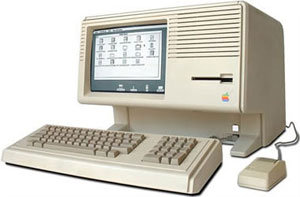US retail giant Best Buy reportedly asked HP to take back 245,000 TouchPads as the retailer had sold just 25,000 in a month. It had bought into HP’s webOS tablets hype and ordered 270,000 TouchPads to sell in its big box stores across the US. Even before HP announced that it was scrapping the whole webOS and TouchPad product lines, Best Buy was trying to send the bulk of that order back to HP. HP could reduce the TouchPad’s price again to almost give-away prices, or it could dig a big hole and bury them. Yes, technology companies with masses of excess inventory sometimes prefer to dump it all in a landfill rather than flood the market with old product. The most famous technology landfill is in Utah, where Apple once dumped its unwanted goods. It’s difficult today to imagine any Apple product being unwanted but the iPhone/Mac/iPad/iPod company was for a long time not the tech gadget darling it is today.
In 1989 Apple packed up 2,700 unsold Lisa computers (a pre-Macintosh PC that boasted the world’s first graphical user interface), drove them to Logan, Utah, dug a giant hole and dumped them in it. This was not because Apple was embarrassed by the failed computer or doing it out of revenge to the former Lisa product chief and old Apple co-founder Steve Jobs. Dumping unsold inventory meant you could write it off for tax relief.
Atari, once the leading games console manufacturer and developer, was also forced to bury tons of excess inventory. It had rush-released a game based on Steven Spielberg’s phenomenally successful E.T. movie, and produced 5 million console cartridges for a Christmas 1982 launch. The game, by all accounts, was virtually unplayable, and nearly every one of those 5 million cartridges was returned to Atari, which had also only just had an equal number of returns of its badly made Pacman game cartridges. In September 1983 it drove 14 trucks stuffed full of consoles and games cartridges to El Paso, Texas, to be dumped in the city landfill in Alamogordo, New Mexico. It chose this landfill as scavenging was not allowed there, and its garbage was crushed and buried daily. To literally pour more insult to injury Atari covered its merchandise with concrete – after crushing it with bulldozers. Atari explained that it had to be crushed and encased in concrete to stop games-mad children trying to dig up the E.T. and Pacman games. Newspapers predictably ran with headlines such as ‘E.T. Trash Go Home’.
HP hasn’t announced what it will do with the hundred of thousands of unsold TouchPads. It could flood the market with cheap tablets to thumb its nose at Apple and its iPad patent war on rival tablet makers. It could even give them all away. But if US tax laws haven’t changed since the late 1980s, it’s quite likely that there’s an army of bulldozers revving up their engines right now. Simon was Editor of Macworld from the dark days of 1995 to the triumphant return of Steve Jobs and the launch of the iPhone. His desk is a test bench for tech accessories, from USB-C and Thunderbolt docks to chargers, batteries, Powerline adaptors and Fitbits.


